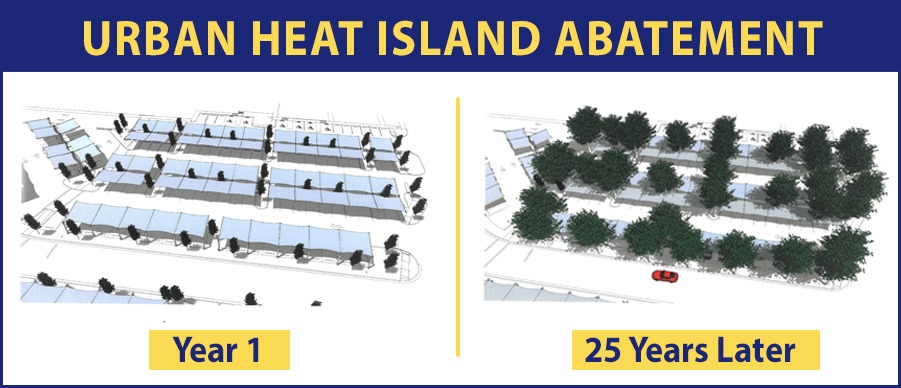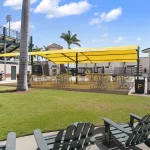How Shade Structures Can Combat Rising Temperatures in Eco-Friendly Style
No, you’re not imagining it. Outside is hotter than ever! Last July broke global temperature records. According to ERA5 data from the EU-funded Copernicus Climate Change Service (C3S), July was the hottest month in Earth’s climatic history. July even broke the record for the hottest day three times within the first week, surpassing the previous hottest day record set in August 2016. Relentless heatwaves are affecting large swathes of North America, Asia and Europe.
It’s becoming increasingly evident that urgent action is required to curb this relentless rise in heat. This dire situation calls for not just short-term relief but long-term strategies that can not only provide respite but also contribute to a greener future. This begs the question: How do we shield ourselves from this climate change in a way that stabilizes temperatures? Enter fabric shade structures – a solution to help us endure the heat and significantly reduces emissions, pushing us towards a more sustainable tomorrow that combats the relentless grip of the urban heat island effect.
The Heat Island Predicament
As temperatures globally soar, cities see higher temperatures than neighboring rural areas. This phenomenon is referred to as the urban heat island effect. As concrete, asphalt, and buildings absorb and retain heat, combined with energy consumption and industrial processes, urban areas become “heat islands.” To dive deeper into the urban heat island effect and its implications, you can explore further here.
A Shady Solution
As the world reels from the impacts of July’s heatwave, the spotlight turns toward unassuming yet transformative innovations. Fabric shade structures are the answer that provides some much-needed hope in the battle against climate change. They are more than just a temporary escape from the heat; they provide a smart, eco-friendly way to cool outdoor spaces while lessening the burden on energy-intensive cooling systems. In urban landscapes, where concrete and asphalt amplify heat and contribute to the urban heat island effect, shade structures emerge as a powerful heat abatement tool that offers tangible relief from the immediate effects of rising temperatures.
Reducing Emissions & Temperatures
The true power of shade structures lies in their ability to reduce carbon emissions. Traditional cooling systems, like air conditioning units, guzzle massive amounts of electricity, contributing to greenhouse gas emissions and exacerbating the warming they attempt to counteract. In contrast, our shade structures redirect and diffuse sunlight to cool the environment up to 20 degrees without contributing to any emission footprints. This effectively alleviates the strain on power plant grids during peak demand hours.
Combining Trees & Shade Structures for Strategic Shading
By strategically planting trees, not palm trees, alongside shade structures, we create a harmonious synergy that amplifies their cooling benefits. Learn more here.
Shaded Electric Vehicles Charge More Efficiently
Shade structures even have unexpected capabilities, such as helping Electric Vehicles (EVs) charge more efficiently. Heat negatively impacts charging station efficiencies. Charging stations operate optimally in sheltered conditions. As the automotive industry undergoes a transformative shift towards EV production, investing in publicly sheltered charging stations will have long-term value.
A Roadmap to Sustainability
As we look at the recent record temperatures in the United States, it’s evident that we need comprehensive strategies to address this challenge head-on. Adopting fabric shade structures is a step in the right direction, offering an effective means to combat rising temperatures while reducing emissions. Their integration into urban planning isn’t just a matter of aesthetics; it’s a conscious step towards creating healthier, more resilient cities. Apollo Sunguard is here to join the united effort to implement shade structures across our cities and public spaces. We can chart a new course toward a cooler, greener and more sustainable future through our collective efforts.
Futureproof Shades with a Warranty You Can Count On
Our shades are durable and are built to stand the test of time. Our robust warranty covers all steel frameworks for 20 years and fabric covers for 15 years, ensuring your investment remains protected for years.








